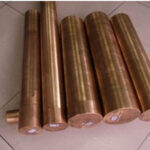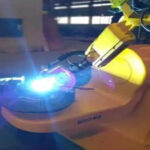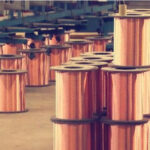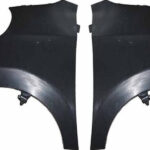Decorative electroplaters in the automotive industry finally decided to transition from hexavalent chromium electroplating to trivalent chromium electroplating. There is a difference between a sulfate bath and a chloride bath, so what is the difference between the two? What factors might we consider when evaluating options?
When evaluating the difference between the two types of baths, several factors in terms of operation and performance should be considered. From an operational point of view, the first and most relevant factor to compare is the plating speed. When turning to decorative trivalent electroplating, many workshops are considering the existing production line layout and timing, and hope to maintain the same process and electroplating speed as hexavalent electroplating to maintain efficiency. Chloride-based systems are usually at least twice as fast as sulphate systems, so this is an important factor to consider, especially if you have a return to automatic plating line.
For example, if your current hexavalent plating time is two minutes, when using chloride-based trivalent plating, you can use the same plating time to obtain equivalent thickness and performance. From an operational point of view, this means that you only need to change the tank equipment and solutions; you do not need to add radio stations to the automatic return line. For sulfate-based systems, you may need to add workstations to accommodate slower plating times.

The second operating factor in evaluating the two systems is the difference in anodes. Chloride-based systems use graphite anodes that can be used continuously indefinitely under proper operating conditions. Sulfate-based systems utilize more costly mixed metal oxide (MMO) anodes that require long periods of operation or scratching before they can be recoated. Workshops using sulfate systems are usually equipped with two sets of anodes to ensure continuous operation, because if the coating is damaged, the MMO anode will produce hexavalent chromium, which completely contaminates the sulfate-based trivalent bath.
From a performance point of view, the color or brightness of the trivalent chromium coating is one of the most common factors when determining the transition from hexavalent to trivalent. The color of hexavalent electroplating is calibrated to an L value of 81-83. Initially, the L values of the first chloride-based systems averaged 74-75, while the sulfate-based systems averaged 75-77. Because of the bright surface, they gained preference earlier. However, the latest developments in chloride-based trivalent electroplating systems and newer technologies in many cases provide a finish that is as white as or whiter than sulfate-based systems, and some L values are between 78-81 between.
The actual color stability of the trivalent system of each color is directly related to the color, and the key consideration for any plate making machine currently performing decoration work for automotive OEMs is its actual color stability. The United States Automotive Research Council (USCAR) recently released its multi-year comprehensive survey results of its “Final Assessment of Exposure to Decorative Trivalent Chromium in Winter Environments.” As part of its goal to determine whether trivalent chromium processes based on chloride or sulfate perform better in general and high chloride corrosion and overall color stability, USCAR evaluated the L, a, and b values before and after chromium deposition. Field test of appearance observation. The test results and conclusions in the third year show that the L value of the chloride system is stable in color, while the L value of the sulfate system decreases with time. The team felt that the replacement parts might not match. Based on the results of this three-year comprehensive field study, all three OEMs recognized that chloride-based bright trivalent chromium chemicals have advantages over sulfates. (Learn more about the USCAR qualification test for trivalent chromium here.)
Finally, another important factor to consider is the corrosion performance of the two systems. This factor was also examined in the USCAR study, and its findings are worthy of your evaluation. As part of a three-year field study, the chloride system was tested against the sulfate system, and it performed better than the sulfate system in a high chloride corrosive environment. Regarding the specific properties of high chloride areas, studies have found that high sulfate chromium corrosion (Russian mud) is more common on sulfate-based chemicals than on chloride-based chemicals. The study showed that 13 of the 14 chemicals with significant loss of chromium are sulfate systems. Again, these test results are specific to USCAR field studies,
When evaluating the difference between chloride and sulfate trivalent electroplating solutions, the plating speed and anode type and function of the operating composition and color, color stability and corrosion performance of the performance composition are the key factors that need to be considered. You make the right Decide. As hexavalent coatings are subject to more and more stringent environmental and worker exposure regulations and controls, many global and domestic manufacturers have specified or are specifying trivalent chromium in their plans to meet the new regulations, so your changes The timing of decorative trivalent plating is just right.
Link to this article: How do electroplating manufacturers choose between sulfate and trivalent chromium chloride?
Reprint Statement: If there are no special instructions, all articles on this site are original. Please indicate the source for reprinting:https://www.cncmachiningptj.com/,thanks!
 3, 4 and 5-axis precision CNC machining services for aluminum machining, beryllium, carbon steel, magnesium, titanium machining, Inconel, platinum, superalloy, acetal, polycarbonate, fiberglass, graphite and wood. Capable of machining parts up to 98 in. turning dia. and +/-0.001 in. straightness tolerance. Processes include milling, turning, drilling, boring, threading, tapping, forming, knurling, counterboring, countersinking, reaming and laser cutting. Secondary services such as assembly, centerless grinding, heat treating, plating and welding. Prototype and low to high volume production offered with maximum 50,000 units. Suitable for fluid power, pneumatics, hydraulics and valve applications. Serves the aerospace, aircraft, military, medical and defense industries.PTJ will strategize with you to provide the most cost-effective services to help you reach your target,Welcome to Contact us ( [email protected] ) directly for your new project.
3, 4 and 5-axis precision CNC machining services for aluminum machining, beryllium, carbon steel, magnesium, titanium machining, Inconel, platinum, superalloy, acetal, polycarbonate, fiberglass, graphite and wood. Capable of machining parts up to 98 in. turning dia. and +/-0.001 in. straightness tolerance. Processes include milling, turning, drilling, boring, threading, tapping, forming, knurling, counterboring, countersinking, reaming and laser cutting. Secondary services such as assembly, centerless grinding, heat treating, plating and welding. Prototype and low to high volume production offered with maximum 50,000 units. Suitable for fluid power, pneumatics, hydraulics and valve applications. Serves the aerospace, aircraft, military, medical and defense industries.PTJ will strategize with you to provide the most cost-effective services to help you reach your target,Welcome to Contact us ( [email protected] ) directly for your new project.
Table of Contents
Link to this article:How do electroplating manufacturers choose between sulfate and trivalent chromium chloride?
Reprint Statement: If there are no special instructions, all articles on this site are original. Please indicate the source for reprinting.:Cnc Machining,Thank!^^








